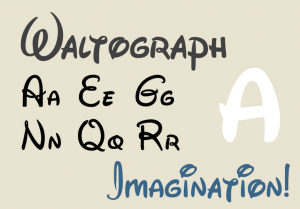Don't touch my typography: Fonts and IP

Typefaces, as with any graphic creation, can benefit from legal protection as long as they meet the relevant criteria for IP protection, as Marine Dissoubray explains.
Typography is both a graphic creation and – to a certain extent – a distinctive sign, since it can form part of a brand’s visual identity. When they meet the required conditions, fonts can be eligible for protection, therefore, under copyright, design and even trademark law or related legal systems, such as passing off and parasitism.
Copyright gives the creators of artistic works the exclusive right to control the ways in which their creations may be used. While it comes into being automatically on the creation of that work in most jurisdictions, a font must still satisfy that jurisdiction’s requirements for originality to benefit from copyright protection. It’s important to specify here that it is the original form given to the letter or character that will be protected and not the letter itself.
Graphic symbols and typographic characters may also be registered as design rights. To be eligible, they must be new (never having been disclosed) and possess their own character in order to give the informed observer a different visual impression from graphics that are already in the public domain.
 While trademark protection is more commonly obtained for the name of a font, rather than its design, the choice of font can play an important role in branding and thus trademark registrations. Think of stylised logos, such as Coca-Cola, for example. Examples include the Walt Disney® trademarks with its easily recognisable ‘Waltograph’ font (pictured right, credit).
While trademark protection is more commonly obtained for the name of a font, rather than its design, the choice of font can play an important role in branding and thus trademark registrations. Think of stylised logos, such as Coca-Cola, for example. Examples include the Walt Disney® trademarks with its easily recognisable ‘Waltograph’ font (pictured right, credit).
Licensing fonts for commercial use
Each typeface is usually accompanied by a licence for use, even if the particular font is made available free of charge. In other words, even if a typeface can be downloaded for free from a specialised website, it is not necessarily free of rights.
Anyone wishing to use a typeface obtained free of charge should carefully read the terms of the free licence or the conditions of use of the source website to avoid the risk of infringement, therefore. It is also advisable to buy from known and reliable sites, as some specialise in counterfeiting typefaces, making them available without the authors' permission.
In addition, some font creators make their fonts available on library sites where they are free to define their own conditions of use with the licence of their choice. Where an author or licence is not indicated, it generally means the library site does not have the information. For this reason, it’s important to always read the small print or check with the font creator if in doubt.
Last, but not least, acquiring a licence does not exempt you from the need to adhere to the relevant terms and conditions of use.
Check the relevant licensing terms
As with any type of licensing agreement, font licences do not provide the licensor with the same blanket rights. For example, the licence may cover only use of a typeface on websites and other digital platforms, which means that you will not have permission to use the font in your desktop and print materials or on merchandise, such as t-shirts, posters or corporate giveaways.
Other licences, such as open source, may permit only personal (non-commercial use), whereas commercial licences may provide wider coverage, but may restrict use to a single user or single project. You may have to take additional or extended licences to cover the full extent of your commercial needs, therefore.
Depending on the use envisaged, we recommend checking the following before proceeding with any new font choice:
- Does the licence allow for commercial use, as opposed to only personal use (such as a blog)?
- Does the licence permit the font’s use in all your channels (offline as well as digitally, on merchandising, etc)?
- Does it allow for static use (i.e. on a fixed image) or dynamic use (which enables the characters to be copied and pasted)?
- How many users are included in the licence – and how many employees or external collaborators are involved in creating or reproducing products or materials that use that font?
- Are you allowed to modify the font (e.g. through stretching, distortion) for your own commercial use, and can you make that version of that font available (it is relatively rare for this to be allowed, except in certain open source licences)?
If in doubt, always speak to your Novagraaf attorney for customised guidance.
Marine Dissoubray is a Trademark Attorney in Novagraaf’s Paris office.